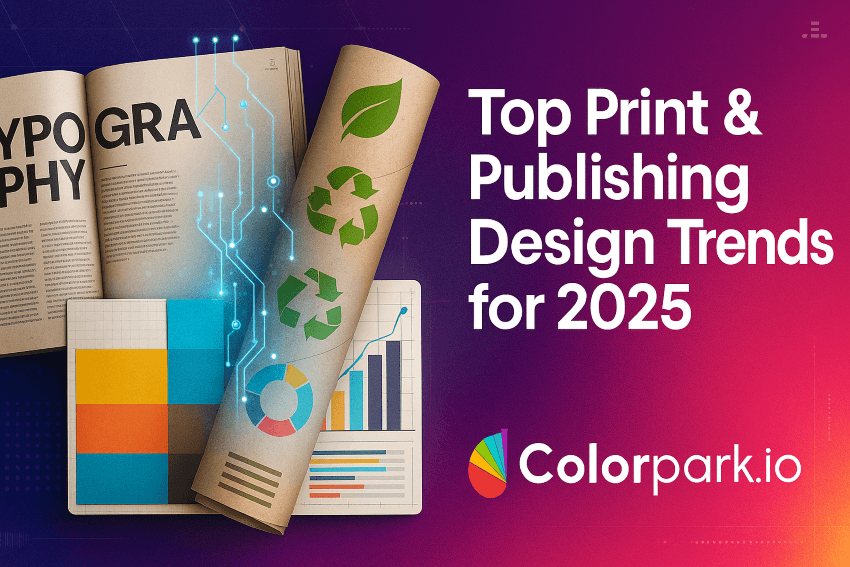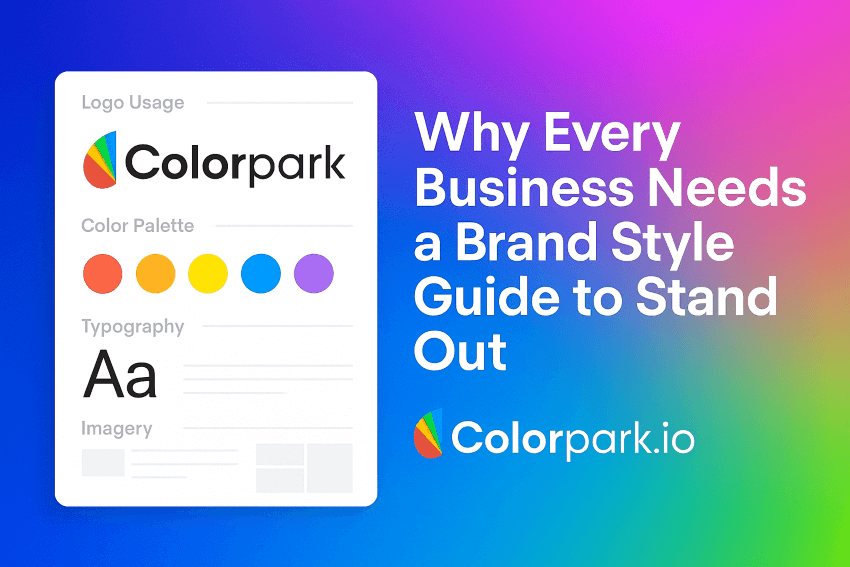Introduction
Print and publishing design isn’t dead — it’s evolving. Despite the digital boom, print media and publishing design still play a crucial role in branding, marketing, and customer engagement. As 2025 approaches, the stakes are higher for designers and businesses to stay ahead of the curve.
From eco-friendly materials to AI-driven workflows and hyper-personalized layouts, this year’s trends promise to reshape how we think about print and publishing. In this article, you’ll discover the top design trends shaping 2025, actionable tips for implementing them, and insights to future-proof your creative process.
H2: Why Print & Publishing Design Still Matters in 2025
While digital dominates, studies show that tactile experiences like print increase brand recall and trust. Annual reports, packaging, book covers, magazines, and direct mail all depend on strong print and publishing design. Businesses that integrate both digital and print experiences see higher engagement.
H3: The Psychology of Print in a Digital World
- Print feels tangible and premium
- Readers spend more time with physical content
- It creates a sense of credibility and permanence
H2: Trend 1 — Sustainable & Eco-Friendly Design
Sustainability is no longer optional. In 2025, consumers demand eco-conscious materials, minimal waste, and ethical sourcing.
Key tactics:
- Use recycled or FSC-certified paper
- Opt for soy or algae-based inks
- Minimize ink-heavy designs for less waste
- Communicate your green initiatives on the product
Example: Penguin Random House began using biodegradable packaging and vegetable inks for its limited editions, improving both brand image and environmental impact.
H2: Trend 2 — AI-Driven Layouts & Automation
Artificial Intelligence is revolutionizing how designers work. In 2025, AI tools like Adobe Firefly, Canva Magic, and MidJourney integrate directly into publishing workflows.
Benefits:
- Automated layout suggestions based on content type
- Instant resizing for multiple formats
- Smarter color palette recommendations
- Predictive print cost calculators
Pro Tip: Combine AI-generated layouts with human creative direction to maintain originality.
H2: Trend 3 — Minimalist but Impactful Typography
Typography in 2025 is about bold simplicity. Clean, uncluttered fonts dominate, paired with strategic bursts of color or custom lettering.
Implementation Tips:
- Use variable fonts for responsive print layouts
- Combine serif and sans-serif for contrast
- Embrace negative space to guide the reader’s eye
Example: Nike’s sustainability report used ultra-minimal typography with high-contrast colors, reinforcing its modern, future-focused identity.
H2: Trend 4 — Interactive Print & Augmented Reality (AR)
AR in print design is moving mainstream. QR codes, NFC chips, and scannable AR triggers bring print to life.
Ideas to try:
- AR-enabled magazine covers
- Interactive business cards
- Product packaging with 3D models or video demos
Case Study: IKEA’s catalog allows customers to scan a page and view a 3D model of furniture in their home environment.
H2: Trend 5 — Hyper-Personalized Publishing
Readers expect more personalization. Digital printing and data-driven insights now enable small-batch, hyper-targeted print runs.
Action Steps:
- Integrate CRM data into print campaigns
- Create multiple cover versions for different segments
- Offer personalized inserts or thank-you notes
H2: Trend 6 — Retro & Heritage-Inspired Design
Nostalgia sells. Vintage aesthetics blended with modern minimalism are surging.
Implementation Tips:
- Use muted color palettes inspired by the 70s/80s
- Layer textures like grain or paper folds digitally
- Combine retro typography with modern layouts
H2: Trend 7 — Data Visualization & Infographics in Print
With attention spans shrinking, print designs must communicate complex ideas quickly.
Best Practices:
- Use modular grids for infographics
- Keep color coding consistent
- Combine vector illustrations with subtle 3D effects
H2: Trend 8 — Accessibility & Inclusive Design
Inclusivity is a non-negotiable trend. Accessible print design ensures wider reach and compliance with global standards.
Key Focus Areas:
- High contrast color schemes
- Readable fonts and font sizes
- Braille or tactile elements for essential content
H2: How to Implement 2025 Trends Without Overhauling Your Workflow
Step 1: Audit Your Current Assets Identify where outdated practices exist — heavy ink, non-sustainable materials, slow manual workflows.
Step 2: Pick Two Trends to Start Focus on the trends most aligned with your audience or industry.
Step 3: Leverage Tools & Partnerships Collaborate with eco-friendly printers, AI tools, and AR developers to streamline execution.
Bullet Points / Quick Takeaways**
- Sustainability and eco-friendly materials are non-negotiable.
- AI-powered automation saves time and reduces errors.
- Minimalist typography and smart layouts improve readability.
- AR and personalization bridge print and digital experiences.
- Inclusive design broadens your audience and builds trust.
Call to Action (CTA)**
Ready to elevate your print and publishing projects? Start by implementing one or two of these 2025 design trends today. For expert guidance, templates, or a consultation, [contact our team or subscribe to our newsletter] for ongoing insights and updates.hire expart
Optional: FAQ Section**
Q1: Are print materials still effective in 2025? Absolutely. Print creates trust, brand recall, and premium perception. Combined with digital, it’s even more powerful.
Q2: Which trend should small businesses prioritize? Sustainability and AI automation offer the fastest ROI with minimal investment.
Q3: How expensive is AR integration in print? Costs have dropped significantly. Many platforms now offer subscription-based AR tools for small businesses.
Tone & Style**
- Conversational yet expert.
- Uses real-world examples and actionable tips.
- Easy-to-read subheadings and bullet points for scanning.
- Integrates high-intent keywords like “print design trends 2025,” “publishing design,” “eco-friendly print,” “AI in publishing.”



